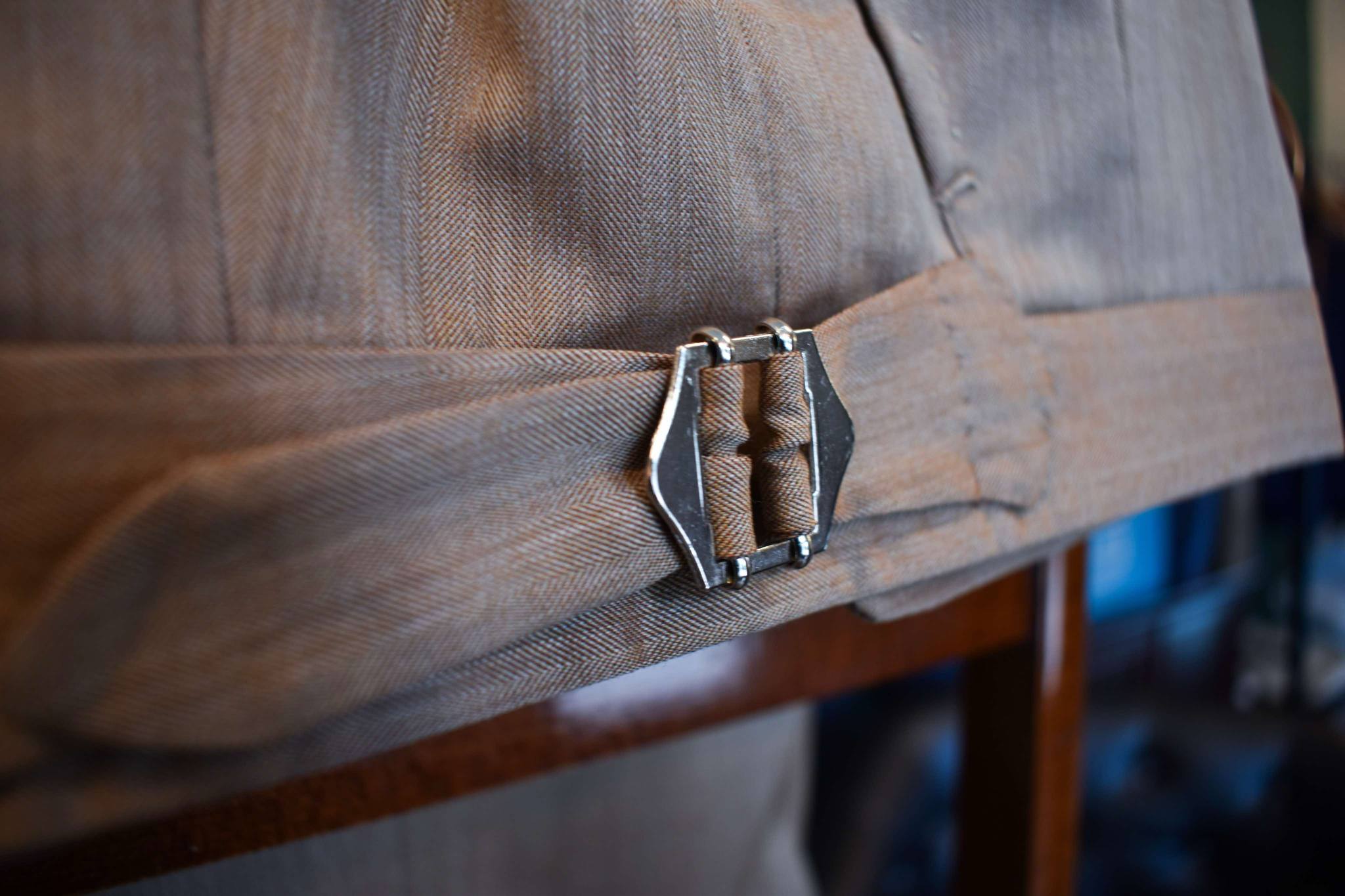Article: Solaro: The Cloth that Commands the Light

Solaro: The Cloth that Commands the Light
Some fabrics whisper their story; others shimmer it into being.
Solaro is one of the latter — a cloth that, even in the stillness of a well-cut suit, seems almost alive. It carries with it not just a history, but a spirit: a reminder that elegance can be at once understated and arresting.

A Fabric Born of Curiosity
At the dawn of the 20th century, as the British Empire stretched across the tropics, the search for protective fabrics became a matter of both science and survival. Exposure to harsh equatorial sun demanded innovation beyond the heavy wools of Europe. It was in this environment that Solaro was conceived — woven with a light-toned warp and a warm, red weft, intended to shield its wearer from the sun’s invisible harms.
Dr. Louis Sambon, a British physician and researcher, proposed that the red undercurrent could mitigate the effects of solar radiation, a theory that, though never scientifically proven, gave rise to one of menswear’s most fascinating weaves.
Even as its scientific claims faded with time, Solaro’s visual magic could not be explained away. The fabric, catching sun and shadow alike, soon moved beyond military utility into the private reserve of discerning gentlemen — first in London’s West End, and later in the sun-soaked streets of Florence, Milan, and Naples.

The Character of Solaro
Traditionally spun from fine worsted wool, Solaro carries a reassuring density — usually weighing between 11 and 12 ounces (310–340 grams) — with a crisp yet breathable hand that makes it uniquely suited for transitional climates.
Yet it is the interplay of its threads that defines it:
-
A sandy beige, olive, or tan warp offers a restrained surface,
-
While a burnished red or brick-colored weft glows subtly beneath.
The result is a living fabric — one that shifts, deepens, and softens depending on the angle of the light and the movement of the wearer. In Solaro, movement becomes part of the design itself: a suit that breathes, flashes, and evolves throughout the day, almost like a second skin.
Worn under bright sun, Solaro radiates a barely perceptible warmth. Indoors, under softer lighting, it settles into a neutral, sophisticated tone — a masterclass in quiet complexity.

Styling Solaro in 2025
Today, Solaro stands as a bridge between eras: rooted in tradition, but fully at home in the wardrobe of the modern man who values subtlety over spectacle.
For the Purist:
A classic Solaro two-piece — softly structured and minimally lined — worn with a crisp white poplin shirt, a navy grenadine tie, and polished brown oxfords. A look that speaks of experience, not excess, and needs no seasonal justification.
For the Modernist:
An unstructured Solaro jacket tossed over an open-collar linen shirt, cream or stone-colored trousers, and brown suede loafers. The perfect balance of effortlessness and precision, ideal for late lunches, seaside weddings, or just a city summer day lived well.
For the Transitional Season:
Solaro’s midweight character allows it to stretch beyond summer. Layer a Solaro blazer over a light merino roll-neck and pair with charcoal flannels or brushed cotton trousers. The warm undertones of the fabric complement the muted palette of early autumn effortlessly.

Contemporary Takes on a Classic
While traditional Solaro remains a pillar of fine tailoring, modern mills have embraced innovation. Today, you’ll find lighter Solaro weaves around 9–10 oz (260–280 grams), cotton-silk Solaro blends for an even softer drape, and reinterpretations in greener or browner shades that lean into contemporary palettes.
Tailors across Naples, London, and New York are crafting Solaro suits with:
-
Unlined or half-lined jackets to increase breathability
-
Softer shoulders and natural silhouettes to heighten the sense of movement
-
High-twist yarn constructions that add durability without sacrificing flow
In short, the modern Solaro suit can now accompany its wearer through a wider range of climates, moods, and occasions — without losing the magic that defines it.
Solaro: Light, Heritage, and Quiet Power
In the end, Solaro is not merely a fabric; it is a conversation with the light itself. It rewards movement. It thrives under the sun. It carries with it a sense of personal history, even when newly tailored.


